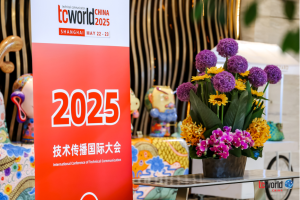Writing Technical Documents

Very important things to remember when writing technical papers are accuracy and clarity. Technical writing is used to get complicated ideas across clearly and concisely. This part will talk about why technical writing is important and point out some key ideas that are needed to write good technical papers.
Importance of Technical Writing
Technical writing is critical in many areas and industries. It helps experts and end users talk to each other and make sure that complicated information is shared correctly and easily understood. Technical documents are very helpful for people, businesses, schools, travel and tourist companies, and medical facilities. These can be user manuals, scientific reports, or engineering specifications.
There are many perks to writing precisely technical documents. It helps get rid of doubt and uncertainty so that people can easily understand and follow the directions. It also makes things safer by giving clear instructions and tips. Well-written technical documents also make things run more smoothly because they help people use goods or services correctly, fix issues, and make smart choices.
To write good technical papers, you need to know about some important ideas in technical writing.
Key Concepts in Technical Writing
Communicating is an important part of professional writing. This means giving correct information by using clear and concise wording. Technical writing aims to get the point across clearly and precisely. It involves picking the right words, putting information in a way that makes sense, and giving correct explanations of technical ideas or processes (Source).
Readability is another important thing to think about when writing technical papers. Technical knowledge can be hard to understand, so it's essential to present it in a way that the right people can understand. To make something easier to read, you need to organize it logically with headings and subheadings and use layout tools like bullet points and tables to help people understand. Technical writers can make sure that the information is easy to understand and remember by changing the document's purpose and audience to fit its content, tone, and style (LinkedIn).
Technical writers need to be accurate and easy to read, but they also need to be able to research to find and analyze reliable sources of information. This makes sure that the scientific papers are correct and up to date. Finding reliable sources, analyzing information seriously, and putting together relevant data into a document are all research skills (Source).
Technical writers can make documents that successfully communicate complicated information to their target audience if they understand how important technical writing is and use key ideas like accuracy, readability, and research skills. In the next few parts, we'll discuss things to think about when writing technical documents, how to organize them, how to improve your writing style, how to work together on technical writing projects, and the best ways to document technical information.
Considerations for Technical Documents

When you're writing technical papers, you should keep a few important things in mind to ensure the information gets across to the right people. Readability, clarity, and the good use of images are two important things to keep in mind.
Readability and Clarity
Technical papers need to be easy to read. This means how easily the people listening can understand what is being said. It's better for reading if you use clear, concise language and avoid jargon and scientific terms that people may not understand. The paper can also be easier to understand by breaking down big ideas into smaller, easier-to-grasp chunks.
Headings, subheadings, and bullet points can help organize information and make it easier for people to find their way around a paper. It's also important to keep a logical flow and structure, making sure that the material builds on itself in a way that makes sense.
It's important to define any technical terms or acronyms used in technical papers so that they are easy to understand. In this way, there is less chance of misunderstanding, and the information is easier to understand for the people reading it. Giving examples and pictures can also help make things clearer by showing how they can be used in real life or by giving visual representations of difficult ideas.
You can look at technical document examples for examples of well-structured technical papers. And finally, technical document templates can help you get started with organizing your technical papers. As explained in technical document format, make sure you follow the exact style rules for the type of document you're working on, like user guides or research reports.
Effective Use of Visuals
Visuals are very important for helping people understand technical information in a paper. They give you visible clues that can help you understand and make complex ideas easier to understand. Pictures, diagrams, charts, graphs, and lists are all visuals.
When using pictures, you should consider what the paper is for and who it's for. Pick images that get the message across clearly and connect with the readers. For instance, charts and graphs can be used to show facts or show how things are related, while diagrams can help you see how things work.
When you use images, make sure they are consistent and easy to understand. Use the right labels, captions, and symbols to set the scene and make the information easier to understand. Also, think about how accessible your images are by giving alternative text descriptions to readers who are blind or visually impaired.
Tables are great for when you want to organize and show facts in a clear and concise way. They can help people find and understand information quickly. Open Oregon has more information on how to use tables correctly in technical papers.
Technical writers can make papers easy for their target audience to read and understand by putting readability and clarity first and using images correctly. Along with clear structure and organization, regular updates, and maintenance, these things affect the quality and usability of technical papers.
Structuring Technical Documents
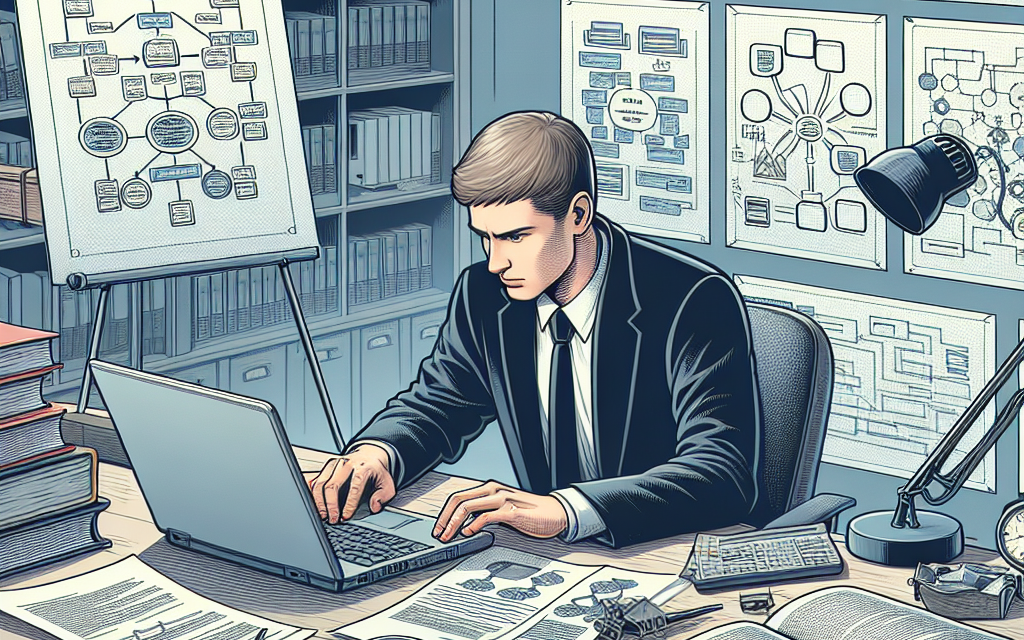
When writing technical papers, it's important to structure them carefully to make the information clear and easy to understand. This part will talk about three important parts of organizing technical documents:
- Knowing what the document is for and who it's for.
- Outlining the document.
- Using examples and pictures.
Document Purpose and Audience
Before you start writing, you need to be clear on what the technical paper is for and who it is for. To do this, you need to figure out the document's main point or message and who it's for, including their needs, expectations, and background. You can make sure that the document meets the needs of its audience and provides useful information by changing the content, tone, and style to fit the goal and audience
Outlining the Paper
A well-structured outline is one of the most important parts of organizing a technical paper. The outline is like a road plan; it shows the writer how to organize the information in a way that makes sense and makes it easy for readers to find their way around the document. The following sections are common to find in a full outline:
- Purpose and Scope: This part tells the readers what to expect by making the document's direction and scope clear. It spells out the document's main purpose or message and the limits of how the information will be presented.
- Background and Context: Giving the background and context is significant for setting the stage for the document's key points. For readers, this part gives them the background information they need and tells them why the document is important.
- Main Points and Subpoints: Some main points and subpoints support the goal of the document. These make up the main body of the document. For clarity and ease of understanding, these points should be put together in a way that makes sense. Use titles, subheadings, and indentations to help with this
Incorporating Examples and Illustrations
It is helpful to include examples and pictures in complex documents to help people understand and keep their attention. Visual tools like diagrams, screenshots, code snippets, and real-life examples can help make abstract ideas easier to understand and absorb. These examples and pictures should be put in the document to make the main points and supporting points stand out.
If you use visual tools, make sure they are clear, useful, and fit in with your words. The writing should be accompanied by visual aids that help the reader understand better. Learn more about technical documents and find examples and forms in our article.
You can make sure that your technical paper is well-organized, informative, and easy for its intended readers to understand by knowing its purpose and audience, making a well-structured outline, and using the right examples and illustrations.
Writing Style in Technical Documents
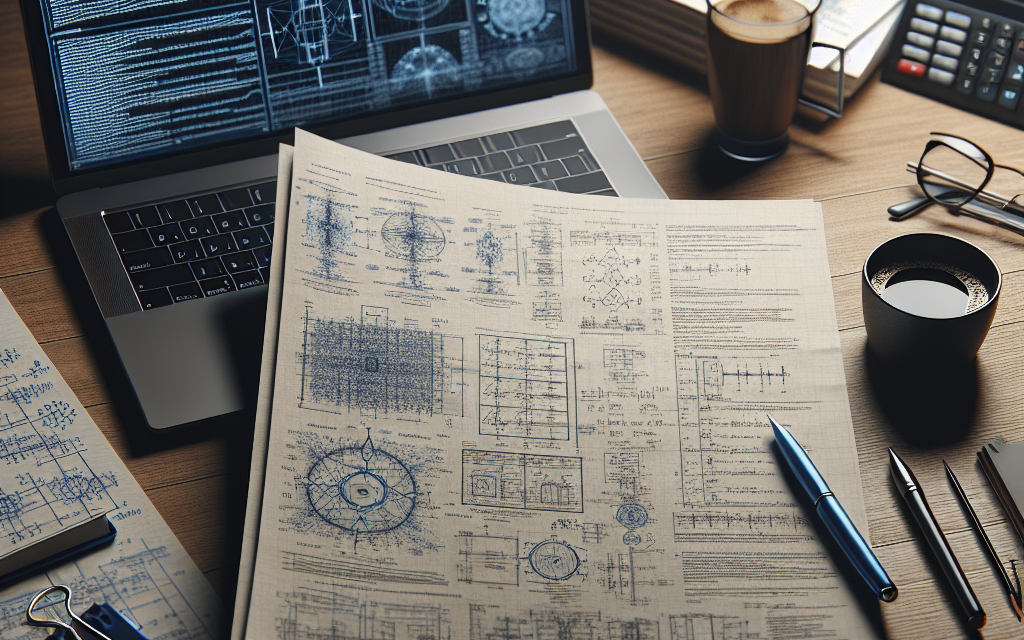
Clarity and accuracy are the most important things to look for when writing technical papers. Technical papers should be written clearly, concisely, and well-organized so that complicated information gets across to the right people. Let's look at two important parts of technical writing style: being brief and precise and using clear sentences.
Conciseness and Precision
When writing expert stuff, you need to be clear and brief so that the information gets across quickly and correctly. When you write in clear, concise language, you reduce the chance of confusion and make the paper easier to read overall.
Briefly, try to get your point across with one idea per line. Don't use words or sentences that aren't needed or that don't add anything to what you're saying. Sentences should be short and clear so that the reader can get the point without any confusion. Ohio State Pressbooks say clear communication is best achieved through simple, fast, and straight sentences.
In scientific writing, accuracy is just as important. Make sure the information is understood correctly by using clear and precise language. Don't use words that aren't clear or could lead to confusion. Being precise helps get your point across easily and leaves no room for confusion.
You can make technical papers that are clear, concise, and easy for your audience to understand by emphasizing precision and brevity.
Sentence Structure and Clarity
In technical writing, grammar and clarity of sentences are just as important as being brief and precise. Crafting sentences that make sense helps the information move and makes it easier for readers to follow along.
Make sure that each line only talks about one idea. This helps people understand better and keeps them from getting too much information. It's easier to understand when you break down big ideas into smaller, easier-to-read words.
When writing for a wide range of people, it's best not to use words or technical terms without first explaining what they mean. Change the way you talk and write to fit the readers' wants and level of knowledge. As needed, give definitions, explanations, or background information to make sure they understand.
Editing and proofreading are necessary steps to improve sentence order and readability. Check your work for any spelling or grammar mistakes, awkward language, or sentence patterns that are hard to understand. You can make your technical paper easier to read and more useful by improving the clarity and flow of your sentences.
Remember that clear and concise expert writing lowers the risk of mistakes, misunderstandings, and extra work. This makes it easier for people to work together, boosts productivity, and ensures that the project is completed successfully.
Using these rules of brevity, accuracy, sentence structure, and clarity in your technical writing will help you get your complicated ideas across to your readers and make sure that your documents are useful and easy to understand.
Collaboration in Technical Writing

When it comes to technical writing, working together is key to making sure that the documentation is correct and of high quality. Subject matter experts (SMEs) and stakeholders can help technical writers ensure that their papers are complete and meet the needs of the intended audience by working closely with them and providing feedback and review.
Working with Experts in the Field
Technical writers need to work together with subject matter experts (SMEs). SMEs are very helpful during the documentation process because they have specialized knowledge and experience. Technical writers can get accurate information, clear up technical details, and make sure the content is correct and full by working with SMEs.
Small and medium-sized businesses (SMEs) help expert writers translate complicated ideas, jargon, and industry-specific terms into language that is easy to understand. Documentation for medical facilities, travel and tourism companies, educational organizations, and businesses must be done precisely because of their knowledge.
Seeking Feedback and Review
Technical writers constantly seek feedback and review from stakeholders and end users to make sure their technical documents work well. Getting feedback from these people helps you find problems, gaps, and ways to make things better. By including their points of view, expert writers can make their documentation more precise and more accurate.
During the review and feedback processes, parties such as development teams, subject matter experts, and others work together. This way of working together ensures that the paperwork fits the project goals and shows exactly what the audience needs and expects. Asking for feedback and review on a regular basis helps to find ways to make things better, clear up any confusion, and keep the technical papers up to date.
Technical writers can ensure that the paperwork they write is correct, complete, and meets the audience's needs by working with subject matter experts and asking stakeholders for feedback and review. When making technical documentation, it's important to work together to make sure it's clear, correct, and useful. Subject matter experts and technical writers work together to make high-quality technical documents that people, businesses, and institutions can use as useful tools.
These articles have examples, templates, formats, and kinds of technical documents that you can read: Technical Document Examples, Technical Document Templates, and Technical Document Format.
Best Practices in Technical Documentation

It is important to follow best practices for clear structure, planning, and regular updates and maintenance to make technical documentation work. These techniques help make the documentation accurate and easy to use, which makes it a useful tool for people who read it. Let's take a closer look at these best practices.
Clear Structure and Organization
The structure of technical writing should be clear and logical, with parts and headings set up to make them easy to find. This makes the paper easier to use and helps people quickly find the information they need. Each part should have a clear title and a short summary of what it covers.
The following tips can help you improve the layout and organization of technical documentation:
- Use descriptive headings: Clearly label sections and subsections with descriptive headings that accurately reflect the content covered. This helps readers quickly locate the information they are looking for.
- Use consistent formatting: Maintain consistency in font styles, sizes, and formatting throughout the document. This contributes to a professional and polished appearance.
- Include a table of contents: For longer documents, include a table of contents at the beginning for easy navigation.
For more information on how to organize technical writing, you can look at examples of technical documents and download templates for technical documents.
Regular Updates and Maintenance
Technical documentation should be kept up to date and managed so that it is always correct and useful. It is very important to keep the documentation up to date as goods or systems change. Information that is out of date or wrong can make things more difficult for users and even cause problems.
To keep the quality of your expert documentation high, think about doing the following:
- Set up a review process: Create a way to regularly review and improve expert documentation. This can include involving subject matter experts (SMEs) and other parties to ensure the information is correct.
- Version control: Set up a version control system to keep track of the changes that have been made to the paperwork. This makes it easier for team members to work together and keep track of the different versions.
- Provide revision history: Revision history that lists the changes that were made to the text in each version. This helps people see how the information has changed over time.
Updating and maintaining technical documentation regularly not only makes sure it is correct but also shows that you care about giving people accurate information. You can make the material more valuable and useful by keeping it up to date.
Clear structure, organization, and regular updates and maintenance are some of the best ways to make sure that your technical documentation is correct, easy to use, and a valuable resource for others. To make sure the quality of your paperwork, don't forget to work with experts in the field and ask for feedback.
Role of Technical Writers
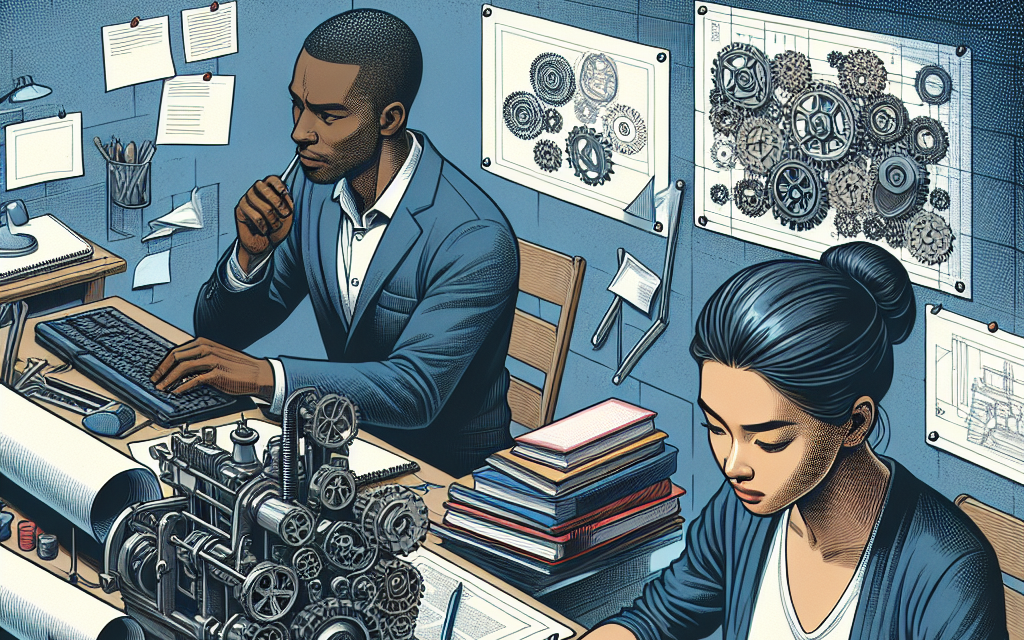
Technical writers are very important when it comes to making technical papers because they translate complicated information for people who need to understand it. They know how to take complicated scientific ideas and turn them into clear, concise, and easy-to-use documentation.
Translating Complex Information
One of the main jobs of expert writers is to turn complicated information into content that anyone can understand. They carefully look over and simplify expert ideas, jargon, and terms so that the information is clear for the people who need to read it. Technical writers make it easy for people to understand complicated material by putting it in a way that makes sense and follows a set pattern. With this knowledge, users can confidently and quickly find their way through technical materials.
For technical papers to be clear, the people who write them need to know exactly who they are writing for. They think about the end users' amount of knowledge, expertise, and specific needs, and then they make the content fit those needs. In this way, they make documentation that meets the audience's wants, making it more useful and easy to use. Click on this link to see examples of technical papers and templates.
Effective Communication and Collaboration
Technical writers are great at working together and communicating clearly. Subject matter experts (SMEs), development teams, and other parties are very involved in making sure that the information they gather for the documentation is correct and up to date. Technical writers can make sure they have access to the most up-to-date and correct information by working with small and medium-sized businesses (SMEs).
Technical writers review the text to ensure it is clear and free of any misunderstanding during the editing process. Users can better understand documentation when it is written in clear, precise wording. Technical writers make sure that the whole paper is clear and consistent by following style guides and industry standards.
Technical writers constantly ask end users and other stakeholders for feedback to find problems, gaps, and ways to make things better. Going back and forth helps improve the instructions, making it more useful and focused on the user. By using comments, technical writers make the documentation more useful and easy to use.
Technical writers make sure that high-quality technical papers are made by translating complicated information clearly and working with a wide range of stakeholders. Bridging the gap between technical knowledge and the audience's needs is made possible by their skills in clear communication and working together.
Creating Effective Visual Aids
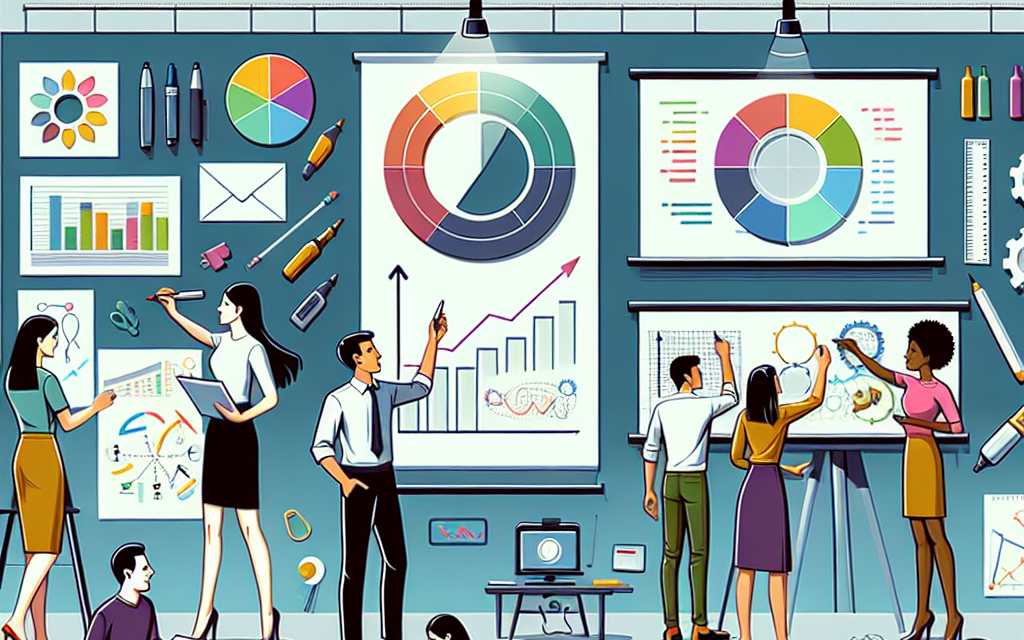
Visual aids are essential when writing technical documents because they help people understand, remember, and use complicated information (LinkedIn). When making visual aids, you should think about what they are for, who they are for, what kind of visual aid to use, and how to make them clear and uniform.
Purpose and Audience Considerations
It is important to know what the technical paper is for and who it is for before starting to make visual aids. It is very important to understand both the document's main message or goal and the readers' wants, expectations, and preferences. Think about how the people who will read the paper will use it and how much information they need to make sure that the visual aids help them understand (LinkedIn).
Types of Visual Aids
When writing technical things, you can use different kinds of visual tools. These are popular types of tables, charts, graphs, diagrams, maps, photos, screenshots, animations, and icons. The type and difficulty of the shared information determines the kind of visual help that should be used. There are pros and cons to each type, and it's important to pick the one that best shows the information or idea being talked about.
Designing Clear and Consistent Visuals
When making visual tools, it's essential to make sure they are clear and consistent. Reading, understanding, and using visual tools should be simple. They should use labels, legends, titles, shapes, colors, and fonts that are easy for people to understand. Keep the visual tools clear and clutter-free to avoid confusion, ambiguity, and distortion. It's also important to keep the style consistent so that the document has the same look and feel. The format, layout, alignment, and language used in the visual aids should be the same as those in the paper and other visual aids.
For visual aids to work well in a technical paper, they must be introduced, discussed, and referred to in the text. Cross-references, headings, and page numbers can make it easy for readers to find the visual tools. If possible, put the visual tools close to the important text on the same page or screen, so there is no confusion or loss of focus. Check the visual tools' size, orientation, and resolution to make sure they work well with the document's text and medium. The graphical tools should add to and support the information in the text, making the message clear and logical.
You can make effective visual aids that improve the understanding and impact of your technical documents by thinking about the goal and audience, choosing the right types of visual aids, and designing them in a clear and consistent way. Remember to make sure that the visual aids flow smoothly with the text so that the paper is complete and useful for the people you want to read it.



![[Regulatory Update] Egypt Imposes New Certification Rules for Manual Translations [Regulatory Update] Egypt Imposes New Certification Rules for Manual Translations](https://maxsuntranslation.com/wp-content/uploads/2025/06/Egypt-Imposes-New-Certification-Rules-for-Manual-Translations-1-300x109.png)
